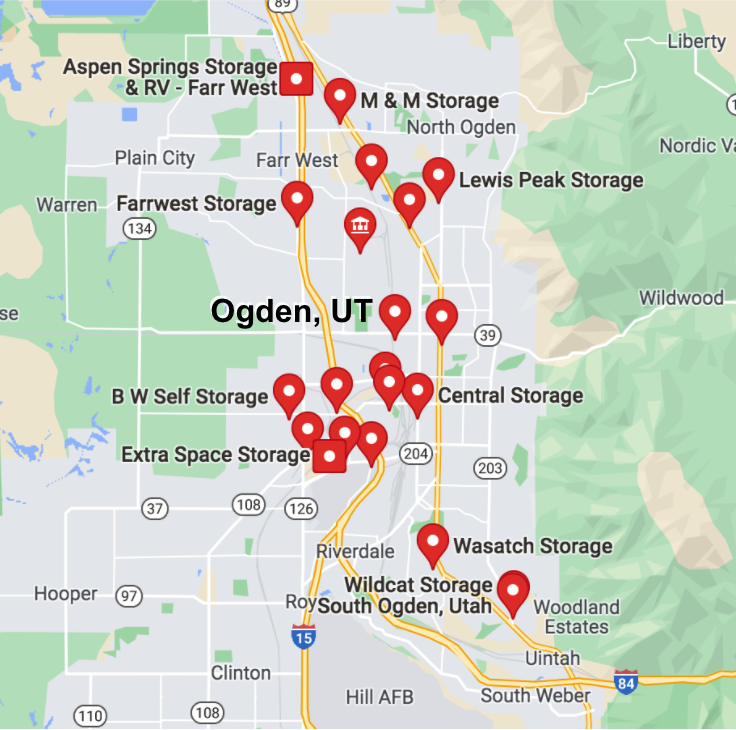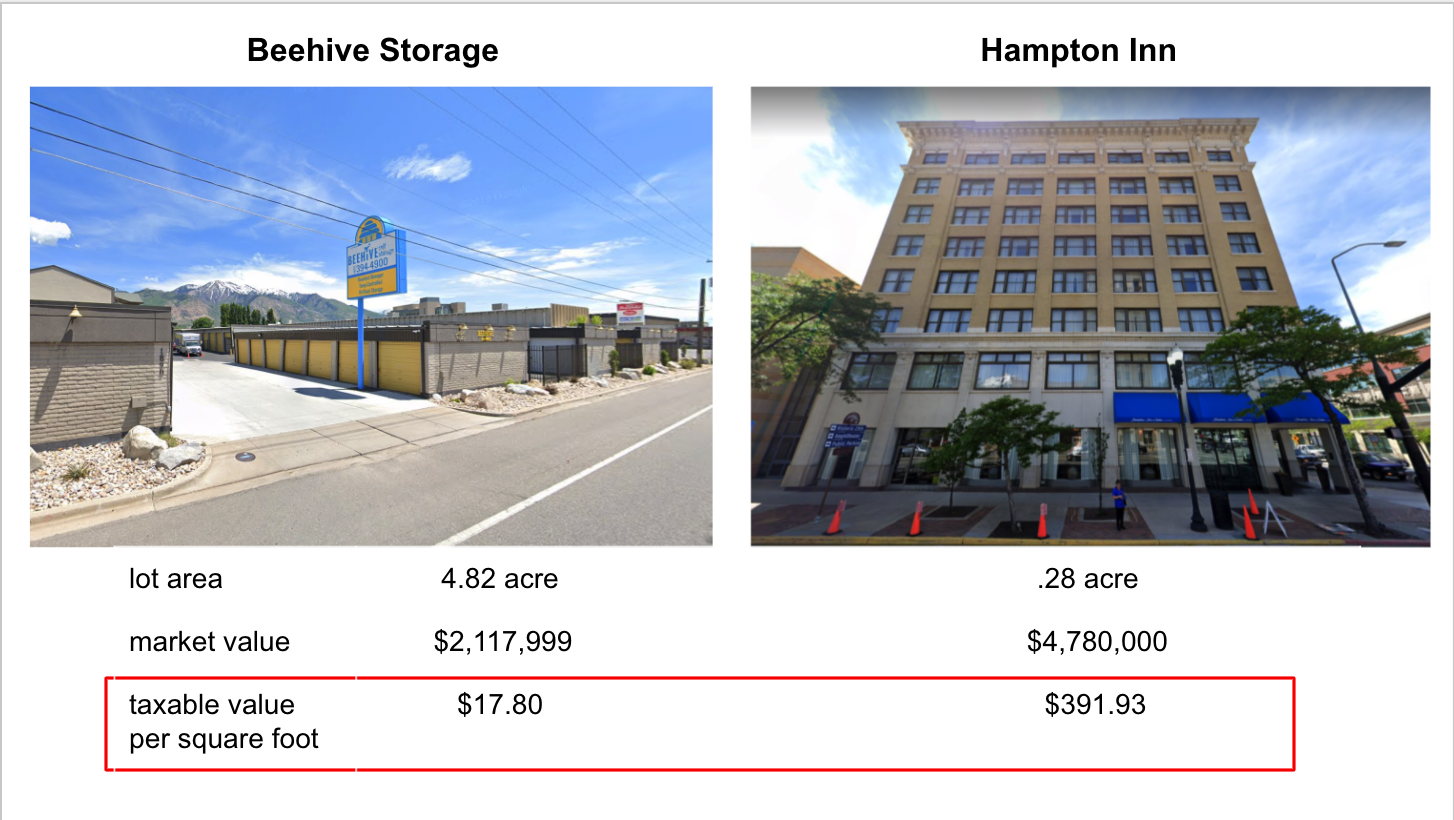Ogden and the Storage Wars
Image via Flickr.
How often do you notice storage facilities around your town? Your answer likely depends a lot on how you get around: if you walk or bike, you’re more likely to notice such an empty and vast land use, whereas you probably won’t if you’re cruising around at 40 mph. The world around you changes a lot depending on how you move through it.
If you’re a frequent walker like me, you probably experience an underlying sense of unease when walking around buildings like storage facilities, that can be so large but devoid of human activity. It is in our nature to feel more secure when passing by lit storefronts and well-landscaped lawns; places that are made for people, not objects.
Ogden, Utah, was facing an infestation many cities are familiar with: storage facilities began creeping more and more into commercial zones, taking up land that could be used to create jobs or activity centers. But unlike many cities, Ogden wanted to make a change to ensure they were getting the most productive use out of their downtown commercial zones, so they drafted a zoning change to prohibit storage facilities being built there.
Now, banning storage facilities downtown may seem like an extreme step, but in the context of Ogden’s central business district, it just makes sense.
Ogden is a smaller town, with a population of about 86,000. It is surrounded by stunning mountain views and has a quaint historic downtown district that the planning department is actively working to make a walkable center of activity. For how small the town is, they have a whopping 20 storage facilities located in and on the outskirts of the city.
Beehive Self Storage at 1890 Wall Ave., Ogden, Utah. (Image via Google Maps.)
Of course, the Ogden planning department realizes people have the right to access storage, but they agree storage does not have the right to destroy the human scale, urban environment they’re trying to create in downtown Ogden. This type of very unproductive use could be better placed further from the central commercial districts to industrial or manufacturing zones that have less pedestrian traffic.
20 storage facilities are located in and around Ogden, Utah.
Compared to other businesses that could move into downtown, a storage unit creates very few jobs, has a low taxable value, and doesn’t really create or sell anything to the community. It does not make fiscal sense to have such an unproductive use of space situated in the central business district, especially when trying to create a walkable environment.
Luckily, there was very little pushback to the zoning change. The city was in agreement that thickening up downtown Ogden was a worthy goal, and they should do anything they could to maintain and duplicate their very productive historic downtown building pattern.
The geoanalytics firm Urban3 took a peek under the hood at Ogden’s finances, mapping out their most valuable land uses and demonstrating fiscally smart ways for the city to grow.
Urban3’s analysis taught the city officials that looking at the form of the development, or the name attached to the bid was not sufficient, and they would have to consider the long-term financial impacts of the types of developments allowed. Urban3’s analysis gave them the math that supported how city planners were feeling: prioritizing urban, active development is good for a city’s solvency, whereas subsidizing sprawling, low-density development does not offer nearly as high returns to the city for the amount of land being used.
A comparison between two properties in downtown Ogden.
From Urban3’s analysis, city planning officials learned that, when it comes to new development, they cannot just confirm zoning and land use standards. They should be calculating the future financial productivity for the development in the specific place it is being proposed and making sure that the return on investment makes sense for the city. When a new business wants to build in downtown Ogden, the planning department will be asking themselves: “Is this the most fiscally productive way to use our finite land resources?”
Ogden is not the only city in the United States that has decided to amend its zoning laws around storage facilities. Denver, Birmingham, and Miami have all recently outlawed such facilities in their commercial districts, a step that will hopefully lead to better walkable environments and more productive land uses for their cities.
What has happened in Ogden is far from the worst-case scenario for storage facilities. Strong Towns is not necessarily anti-storage facilities. However, as a general rule, it’s a bad idea to build storage facilities downtown. They don’t contribute anything to the activity or life of downtown, and they are hard to repurpose over time as a community changes. If there’s truly a need for storage spaces, build mixed-use storage facilities, where the first floor can be an active use, such as a restaurant or a store. Your downtown area will be much better off with human-oriented, human-scale buildings populating the main streets than dimly lit rows of garages filled with stuff.
Storage facilities can be implemented thoughtfully in a downtown setting. Large cities like New York have no choice but to implement creative storage solutions, especially with it becoming increasingly unaffordable to have a home with enough space to store keepsakes. But these are an exception, and shouldn’t be the rule.
For a city like Ogden, Utah, it doesn’t make sense to sacrifice the walkability and activity of downtown for something that can simply be built a few miles away in a manufacturing zone. There is no denying storage facilities can prove useful in some places, and there’s certainly a market for some amount of storage space, but the U.S. is not living through a storage facility shortage, so cities can afford to be a little more critical about where they’re built and how they relate to the greater community.








Many cities in the United States are experiencing a housing crisis, with pressure growing for someone to find a solution. But is an official solution even possible? With dysfunctional institutions and a divided culture, the “solution” might come down to individuals doing what they can in the moment.